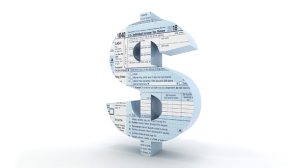The balance sheet versus the cash flow statement
If you ever want to start a fight, ask a bunch of finance people which financial statement is the most important to a propane retailer.
Our answer to the question: It depends.
If you look at the continuing operations, we argue that neither the cash flow statement nor the balance sheet is the most important. We would argue that the income statement is the most important to a manager of a propane operation. Simply, the income statement will tell the manager what gross margin and operating expense trends are from month to month and year to year and whether the business is generating a profit or loss. The downside of an income statement is it tells you nothing about assets, liabilities or cash generation from outside the operation. The biggest weakness of the income statement is it can be distorted with capital purchases and retailers attempting to reduce their tax liability by pushing expenses or income to either the current year or future years.
The balance sheet is generally the most important financial statement to your banker. Why? The balance sheet lists your current assets (cash, accounts receivable, inventory and prepaid expenses) and fixed assets (land, tanks, vehicles and equipment). It also lists all liabilities (money borrowed by the retailer and due a lender). The balance sheet shows what type of equity the owner has in the business and retained earnings. It also shows the working capital requirements from month to month.
Bankers like to see assets that are on the books when loaning money for new equipment or as a credit line. Why? If a banker has to call a loan, the banker will at least have a list of assets available to him to settle the loan. The cash flow statement and income statement cannot tell a banker this information. The downside of the balance sheet is many times fixed assets have been fully depreciated so you cannot determine the true asset value. It also does not tell you where the company’s money is generated. The balance sheet can tell you the direction your assets and liabilities are headed but not why the assets and liabilities are moving in that direction.
The cash flow statement is likely the least-used financial statement in a propane operation. Yet, the statement includes a tremendous amount of information. The cash flow statement quickly shows where the cash is generated (the business itself, investment activities from the purchase or sale of assets, and financing activities from investors/banks or cash payments for stockholders). It shows the manager how much real money is coming into the business, how much is going out and how much is left over. An owner and/or manager can quickly see if cash is available to pay expenses and pay down loans and credit lines. Since the cash flow statement shows where cash is coming from, it also shows where the cash is going.
All three statements are important to running your business. Which is more important depends on what you are trying to achieve at any given time. Using a combination of all three financial statements – income statement, balance sheet and cash flow statement – a retailer can, and should, build real-time operational reports that show cash trends, gallons sold and gross margins by category (dollars and cents per gallon), expense trends, working capital calculations and different profitability ratios.
*Featured photo: iStock.com/alexsl
Jeff Thompson is a supply and risk management expert for Propane Resources.

















